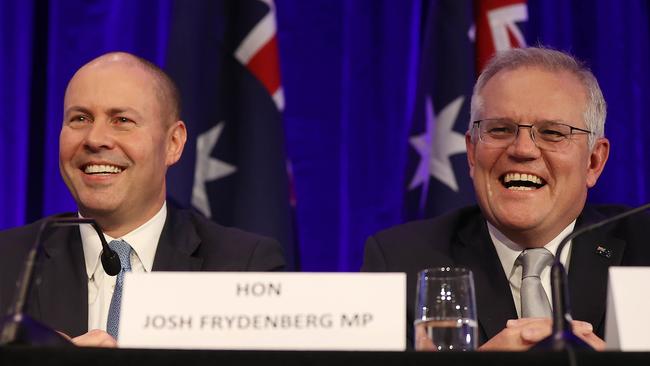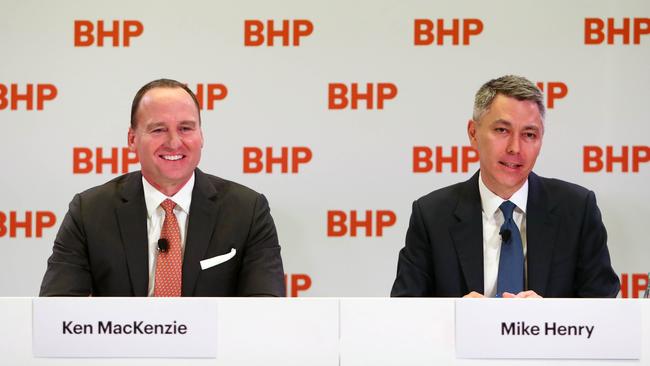
Plant and equipment spending rose 9 per cent but the boost to the numbers comes from a big jump in inventories, showing production up as consumer spending slowed.
The strong economic numbers will put more political pressure on the Victorian government as it prepares to decide on whether to continue the lockdown from this week.
The good news from the GDP figures is a bounce in business investment across the board, led by housing, but extending into plant and equipment, which rose by some 9 per cent. This comes as consumers have slowed their consumption in the wake of the end of JobKeeper and other support packages and offers hope the rebound can be sustained.
Melbourne on some counts ranks higher than most cities in the world on actual lockdown days, but even if the lockdown continues Josh Frydenberg is 100 per cent correct in rejecting Victorian pleas for an extension of JobKeeper-type assistance.
The Treasurer, as Wednesday’s figures will show, has done more than enough last year to help the economy through the initial Covid hit.
The feds should obviously fast-forward Victoria’s push for better quarantine facilities and ensure its aged care homes are fully supported and vaccinated, but the income support Victoria is hoping for is simply not on.
The Victorian government needs to come to the aid of its residents but there is a real risk that continued support from Canberra will simply take the pressure off the state to get its own house in order.
The issues are complex – and the latest outbreak started in South Australia, so maybe it could kick in some funds – but the risk is of continued federal handouts continually extended.
In stark contrast to the downbeat Treasury estimates in this year’s budget, business spending appears to be emerging as the beacon of hope.
Answer to volatility
Magellan boss Brett Cairns has spent almost a lifetime developing a product that offsets the fact that volatility is a friend when you accumulate capital but an enemy as you spend it.
His FuturePay product achieves this by collecting savings in one bucket supported by a trust which will top up the fund when the market is falling and collects money when the market is growing.
The units are traded on ChiX which means you can transfer the risks.
In simple terms if you invest a hefty $500,000 in units worth $5.75 each you will own 87,000 units which pay an income of 2.3c a unit or $1766 a month and $21,100 a year.
That fixed distribution would more than pay the bills for most households.
The returns, like the original capital, should grow with inflation.
The risks are obviously continued underperformance of the underlying equities, but at first glance Cairns appears to have created a single product that offsets the competing investment needs.
The federal government wants super funds to come up with products which help people in retirement and Cairns scores high points on most checklists.
Potash needs patience
When BHP says it’s thinking about making an investment decision on a giant potash project by mid-year, that means anything from June to August and even September.
But the latter end of that time is when insiders say a final approval is more likely for the $US5.7 billion spend on its Jansen potash project in Canada.
To most outside BHP mid-year means June or maybe July. But then this decision has been waiting to happen over the course of three different chief executives, dating back to Marius Kloppers’ failed bid for Potash Corp back in 2010.
Current CEO Mike Henry is good at detailing what needs to be considered, but not so good at making the decision.
The betting is heavily in a favour of a green light for what would be the biggest capital investment for BHP since its ill-fated $US15.1 billion acquisition of Petrohawk in 2011.
But there are more twists in this tale than most.
Belarus is a big global supplier of the fertiliser ingredient but is also on the nose internationally after the hijacking of a Ryanair plane.
The EC is looking at sanctions against Belarus and what better for the potash market than imposed limits which would help boost prices which are already climbing from circa $US200 a tonne to about $US300 a tonne.
A change in the guard at Canadian fertiliser firm Nutrien could also open the door for joint venture talks.
BHP is now run by two Canadians - chairman Ken MacKenzie and CEO Mike Henry - so there’s no chance of the cultural mistakes made a decade ago by then boss Kloppers.

The world needs more food and BHP needs another commodity to make up for iron ore which demonstrably is running into potential problems due to China’s desire to control its own fate and the federal government’s disastrous handling of relations with China.
In a recent note from Scotiabank reporting on a roundtable with Henry the BHP boss confided “our thinking really hasn’t changed”.
Which is something BHP has said for the last decade, which makes you wonder why it is taking so long to make a decision on Jansen, particularly when the company has already spent plenty developing the underground project, which has an estimated mine life of 50 years.
Recent reports suggest a change in the guard at potash market leader Nutrien may lead to some sort of partnership in the development of Jansen.
Mayo Schmidt in April stepped down as Nutrien chair to take over as president and CEO, after Chuck Magro’s sudden departure.
Myriad opportunities now loom, including the fact Nutrien buys gas in Trinidad and Tobago for its ammonia plants and BHP just happens to supply that market .
Henry said recently of the giant potash development: “We’ve always said we’re open to partnering, but the project doesn’t need a partner to proceed.
“So the key things that are required for the project is to get the project studies finalised, get the port option sorted, and then we can make a call as to whether we carry it forward to the board for an investment decision.”
That process has lasted a decade or more but if you were hoping BHP might decide in June, then it seems maybe August or September is more what BHP was thinking when it said “mid-year”.



Wednesday’s better-than-expected GDP figures are expected to show business investment has taken up the slack from slower consumer spending in the March quarter, which raises hopes of sustained improvement in the economy after a 1.8 per cent-plus lift in the March quarter.